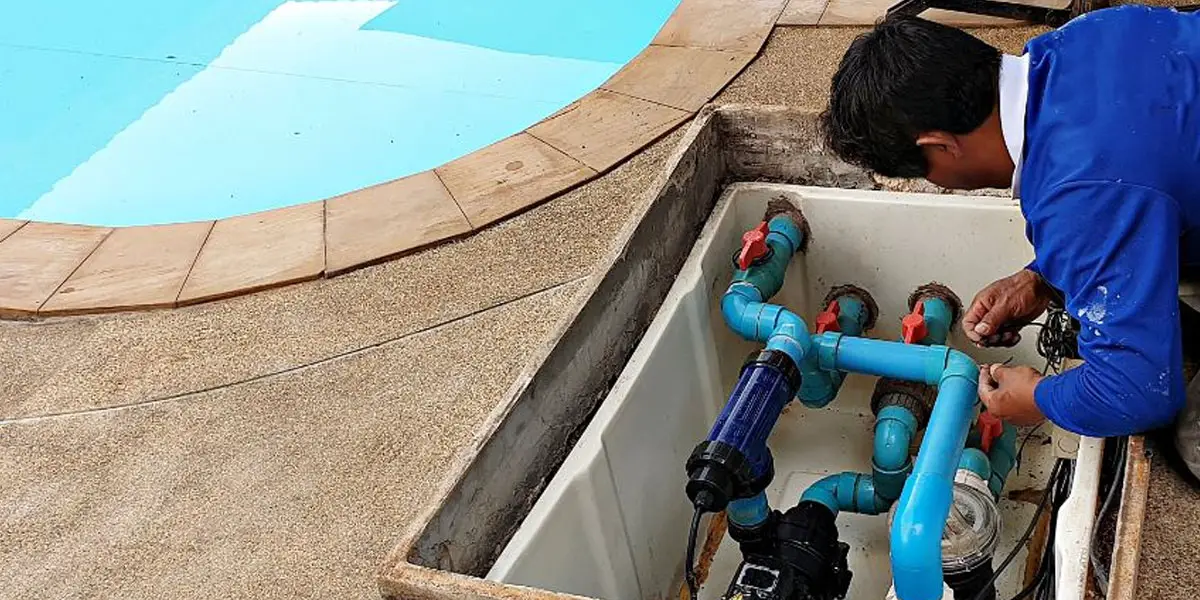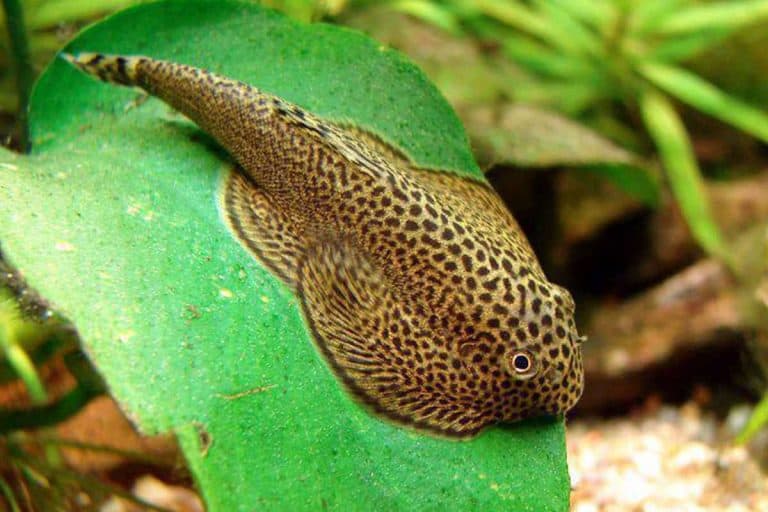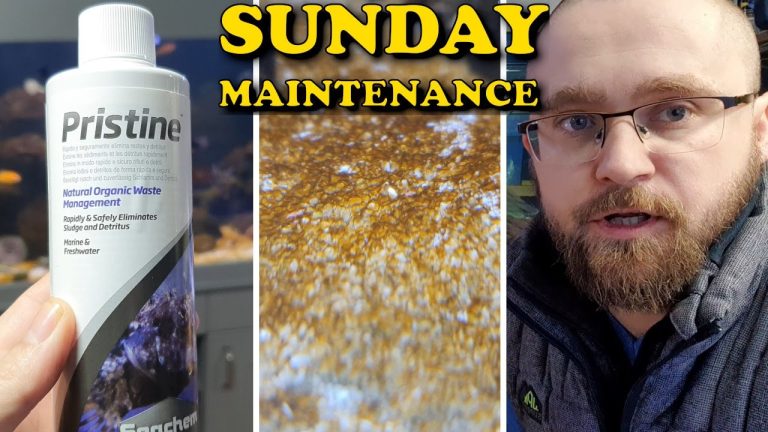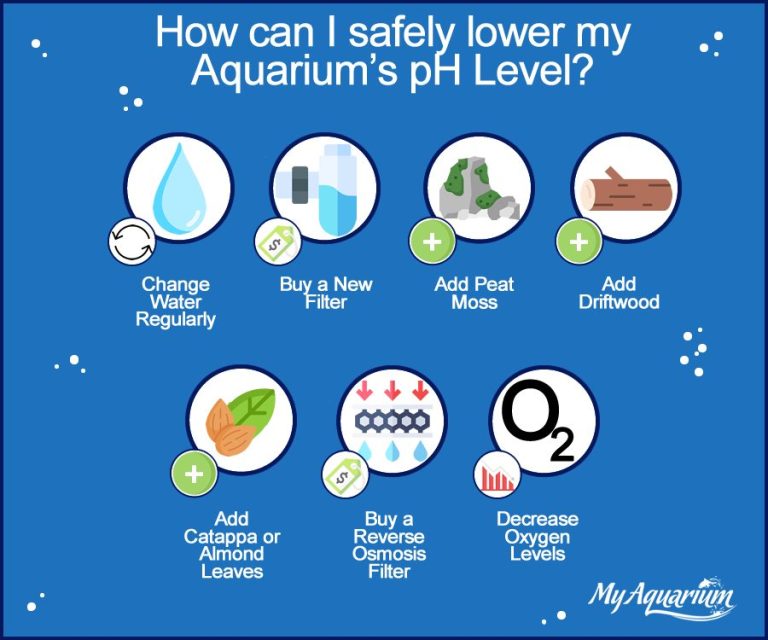Mastering Saltwater Tank Maintenance: Tips and Tricks
Maintaining a saltwater fish tank can be challenging but is possible with proper care. A saltwater fish tank is an excellent addition to any home or office, offering a serene and calming atmosphere.
Although it may appear effortless to maintain, it requires careful attention and knowledge. Saltwater fish need specific water conditions to thrive, making their habitats more complex compared to freshwater fish. The water temperature, ph level, and salinity must be strictly maintained.
Additionally, the tank needs to be cleaned regularly to prevent the buildup of harmful chemicals and algae growth. Despite the challenges, caring for a saltwater fish tank can be an enjoyable and rewarding experience when done correctly. This article will provide you with tips and tricks to help you take care of your saltwater fish tank.
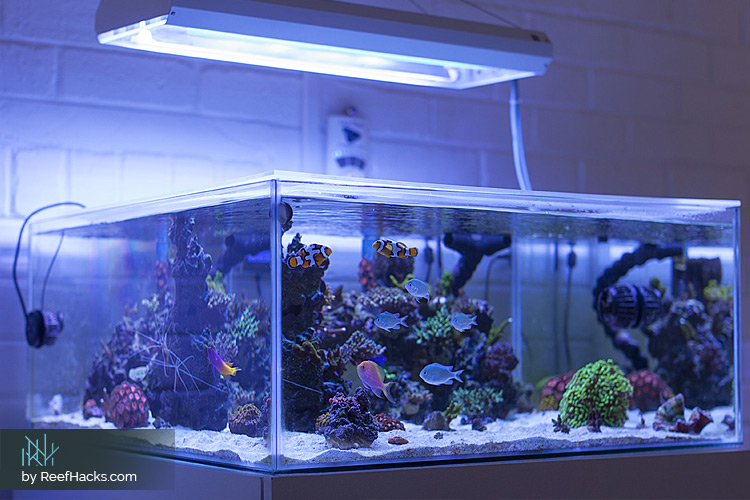
Credit: www.reefhacks.com
Importance Of Proper Saltwater Tank Maintenance
Maintaining a saltwater fish tank can be an exciting and rewarding experience, but it requires a lot of effort and dedication. Proper maintenance is essential to keep your fish healthy and vibrant. In this blog post, we will discuss the importance of maintaining a saltwater tank and the benefits and consequences of maintaining or neglecting your saltwater aquarium.
Benefits Of A Well-Maintained Saltwater Tank
A well-maintained saltwater tank has numerous benefits, such as:
- Healthy fish: Proper maintenance ensures that your fish are healthy, stress-free, and free from infections and diseases.
- Beautiful tank: A well-maintained tank is visually appealing and enjoyable to look at, which can help reduce stress and improve mental well-being.
- Reduced costs: Regular maintenance can reduce the cost of replacing dead fish, equipment, and decoration, as a result of poor maintenance.
- Better water conditions: Regular water changes and cleaning of the tank can help maintain the right ph levels and water parameters which can be achieved through the addition of a good protein skimmer.
Consequences Of Poor Maintenance
Poor maintenance of a saltwater tank can lead to numerous consequences, such as:
- Unhealthy fish: Poor maintenance leads to an unhealthy environment that can cause stress, infections and diseases.
- Algae buildup: Poor maintenance leads to an algae buildup, which triggers the growth of bad bacteria and makes the tank unsightly.
- Equipment malfunction: Poor maintenance can lead to equipment malfunction, which triggers a chain of bad consequences, such as water contamination and death of fish.
- Foul odour: Poor maintenance can lead to the development of a foul or unpleasant odor in the room where the tank is located.
Proper maintenance of a saltwater fish tank should be taken seriously and treated as a responsibility. Neglecting or putting off maintenance can lead to negative consequences, which defeats the purpose of having a beautiful saltwater aquarium. By following the correct maintenance schedule, you can have a healthy marine ecosystem that can be enjoyed for years to come.
Essential Equipment For Saltwater Tank Maintenance
Maintaining a saltwater fish tank can be a tough task, but with the right equipment, it can be a pleasant and enjoyable experience. The following are the essential equipment for saltwater tank maintenance:
Protein Skimmers
- Protein skimmers are essential for removing organic compounds from the water like uneaten food, fish waste, and other organic debris.
- They work by creating tiny bubbles in the water, which attract the organic compounds which are then removed.
- Protein skimmers should be used regularly to maintain the cleanliness of the water, and it is essential to choose the appropriate size according to the tank’s volume.
Water Testing Kits
- Water testing kits are necessary for monitoring the water parameters like ph, salinity, and ammonia levels.
- Testing the water regularly ensures that the conditions in the tank remain stable, creating a healthy environment for the fish.
- It is important to follow the manufacturer’s instructions for testing the water and regularly replace the expired testing solutions.
Powerheads And Wavemakers
- Powerheads and wavemakers are essential equipment for keeping the water in motion inside the aquarium.
- They circulate the water, providing the fish with oxygen, and eliminating dead spots where debris can accumulate.
- A carefully crafted water flow also mimics the natural environment of fish, creating a stress-free environment where fish feel more comfortable.
Heater And Chiller
- A heater and chiller are essential equipment for maintaining a stable water temperature that is favorable for the fish.
- A heater is needed to increase the temperature when it’s too cold for the fish, while a chiller does the opposite when it’s too hot.
- Selecting the correct equipment for your tank size and location is crucial.
Automatic Top-Off System
- An automatic top-off system is crucial in maintaining consistent water levels in your aquarium.
- It works by refilling the tank with water that has evaporated, without you having to do it manually.
- This equipment ensures that the salt concentration levels remain stable, preventing any adverse effects on your fish.
Maintaining a saltwater fish tank requires proper knowledge and the right equipment. Investing in the essential equipment for saltwater tank maintenance ensures that your fish thrive in a healthy environment for years to come.
Step-By-Step Guide To Saltwater Tank Maintenance
Maintaining a saltwater fish tank can be a daunting task for beginners. It may seem like a lot of work, but with regular maintenance, it can be a gratifying experience. We will guide you through the step-by-step process of saltwater tank maintenance.
Checking Water Parameters
It is crucial to maintain a stable environment for your fish and corals. Checking water parameters regularly will help you identify any potential problems before they become more significant. Here are the key points to remember when checking water parameters:
- Use a high-quality testing kit to test water parameters regularly.
- Parameters to check include temperature, salinity, ph, ammonia, nitrite, and nitrate levels.
- Aim to keep water parameters stable, as the sudden change can harm your fish and corals.
- Keep a log of the water test results to track any possible fluctuations.
Water Changes And Cleaning
Regular water changes and cleaning are essential to keep your tank clean and healthy. Here are the key points to remember when performing water changes and cleaning:
- Perform a water change of 10-20% every week or two. The water change will help remove any accumulated debris or waste.
- Use a siphon to clean the gravel or sand substrate regularly.
- Clean the glass walls of the tank using a magnetic or handheld scraper.
- Clean or replace the filter media every month to maintain the filter’s efficiency.
Algae Control
Algae is a natural part of the saltwater aquarium ecosystem, but it can grow out of control if left unchecked. Here are the key points to remember when controlling algae:
- Keep the tank away from direct sunlight, as it can promote algae growth.
- Reduce the amount of light exposure to the tank, if necessary.
- Regularly clean the tank’s walls to prevent algae from taking hold.
- Use herbivorous fish or invertebrates to naturally control algae growth.
Equipment Maintenance
Regular maintenance of your equipment is essential to ensure its longevity and efficiency. Here are the key points to remember when maintaining your equipment:
- Clean equipment regularly, following the manufacturer’s instructions.
- Ensure that all equipment, including pumps, heaters, and filters, are functioning correctly.
- Clean the protein skimmer every week to remove any build-up.
- Replace the bulbs of the light fixtures regularly to ensure that the corals receive sufficient light.
Quarantine Process For New Fish Or Corals
If you are introducing new fish or corals to your tank, it is crucial to quarantine them before adding them to the main tank. Here are the key points to remember when quarantining new fish or corals:
- Set up a quarantine tank and ensure that it has the same water parameters as the main tank.
- Keep new fish or corals in the quarantine tank for at least two weeks.
- Observe the new fish or corals for any signs of disease or stress.
- Treat any health issues before adding them to the main tank.
Maintaining a saltwater tank may seem daunting, but regular maintenance can make it an enjoyable experience. By following this step-by-step guide, you can ensure that your tank is a healthy and thriving ecosystem.
Advanced Techniques For Saltwater Tank Maintenance
For those serious about maintaining a saltwater fish tank, basic techniques for maintenance may not suffice. To keep the aquarium ecosystem healthy, a more advanced level of maintenance is required. This includes refugium setup and maintenance, calcium and alkalinity supplementation, dosage calculation and water buffering, and sump setup and maintenance.
Refugium Setup And Maintenance
A refugium is a natural filtration method that functions as a secondary aquarium where macroalgae and other aquatic plants are kept to absorb excess nutrients from the main aquarium. Refugiums can be set up in many different ways depending on the individual requirements of each aquarium.
Some of the key points to keep in mind for refugium setup and maintenance are:
- Choose an appropriate size for the refugium based on the aquarium’s volume and bioload.
- Select the right type of lighting that will help grow the plants and macroalgae in the refugium.
- Regularly monitor the refugium’s ph levels, temperature, salinity, and nitrate levels to ensure optimal conditions for the plants and macroalgae to grow.
- Perform frequent water changes for the refugium to clean it and prevent the excess accumulation of organic matter.
Calcium And Alkalinity Supplementation
Calcium and alkalinity are important elements in seawater, and their levels need to be maintained to ensure the proper growth and health of coral and other invertebrates. When the levels of these elements drop, it can cause problems in the aquarium ecosystem.
Some tips for calcium and alkalinity supplementation are:
- Use a reliable test kit to measure the levels of calcium and alkalinity in the water.
- Choose a supplement that is safe for the aquarium inhabitants.
- Always follow the manufacturer’s instructions carefully.
- Keep a record of the supplement dosage and the results to monitor any changes.
Dosage Calculation And Water Buffering
Water buffering is crucial in maintaining the ph level of the aquarium. Dosage calculation is essential to understand how much buffer to add to achieve the desired ph level. Here are some important factors to keep in mind when working with dosage calculation and water buffering:
- Measure the ph level and the buffer’s ph level before adding it to the aquarium.
- Follow the manufacturer’s instructions for buffer dosage.
- Monitor ph levels closely after adding buffer to ensure it is increasing at the desired level.
- Keep a record of the buffer dosage and the ph level after adding it.
Sump Setup And Maintenance
Sumps are another natural filtration option for the saltwater aquarium. They work by allowing natural microorganisms to form a colony and help degrade organic waste and other unwanted substances in the water. To maintain optimal conditions for the sump, keep in mind the following:
- Choose an appropriate size for the sump based on the aquarium’s volume and bioload.
- Check the sump’s pump regularly to ensure that it is functioning correctly.
- Clean the sump’s skimmer regularly to prevent buildup from impeding filtration performance.
- Monitor the sump’s water level and temperature to ensure optimal conditions for microorganisms to thrive.
By following these advanced maintenance techniques, you can ensure the long-term health and success of your saltwater aquarium. Always remember to keep a record of changes, dosages and results to monitor any progress or setbacks, and to consult with an aquarium professional if you have any doubts or questions.
Troubleshooting Common Saltwater Tank Maintenance Issues
Maintaining a saltwater fish tank can be a rewarding hobby, but it also requires dedication and effort to keep everything running smoothly. While regular maintenance is crucial to prevent problems, sometimes you may encounter issues that need troubleshooting. Here are some common saltwater tank maintenance issues and their solutions:
Algae Blooms
One of the most common problems in saltwater fish tanks is algae bloom. When your tank is exposed to excessive light, nutrients, or phosphates, algae can start growing rapidly, covering your tank’s walls, substrate, and decorations. Here are some tips to prevent and control algae blooms:
- Reduce the amount of light by dimming your aquarium lights or using a light timer
- Monitor the nutrient and phosphate levels in your tank and avoid overfeeding your fish
- Add more live plants to compete with algae for nutrients
- Clean your tank regularly and remove excess algae manually
- Consider using algae-eating fish or snails, such as hermit crabs or certain types of coral
Fish And Coral Diseases
Another common issue in saltwater fish tanks is the spread of diseases among your fish and coral. Poor water quality, stress, and overcrowding can all contribute to disease outbreaks. Here are some steps to take to prevent and treat diseases:
- Ensure your tank has a proper filtration system and test your water regularly for ammonia, nitrite, and nitrate levels
- Avoid overstocking your tank and keep the water temperature stable
- Quarantine new fish and coral before introducing them to your tank to avoid introducing infections
- If you notice any signs of disease, such as lethargy, loss of appetite, or abnormal growths, isolate the affected fish or coral immediately and perform a water change
- Consult a veterinarian who specializes in fish and coral care if the problem persists
Equipment Malfunctions
Sometimes, despite your best efforts, your tank equipment may malfunction, causing problems for your fish and coral. For example, your heater may stop working, or your powerhead may lose its flow. Here are some tips to avoid and fix equipment malfunctions:
- Choose high-quality equipment and perform regular maintenance to ensure it’s functioning correctly
- Keep a spare heater and powerhead in case of emergencies
- Monitor your tank temperature and flow rate and make changes as necessary
- If you notice any signs of equipment failure, such as unusual noises or a lack of heat or flow, shut off the device immediately and seek professional help or replace it
Water Chemistry Fluctuations
Finally, water chemistry fluctuations can cause problems in your saltwater fish tank. Salinity, ph, and alkalinity are crucial parameters to maintain in your tank, and any variations can cause stress and harm your fish and coral. Here’s what you can do to maintain stable water chemistry:
- Test your water parameters regularly and adjust accordingly
- Avoid sudden changes in water chemistry and maintain a stable environment for your fish and coral
- Use high-quality salt mix and ensure the salinity is within the optimal range for your tank inhabitants
- Consider using buffers and supplements to maintain ph and alkalinity levels
- Follow a regular maintenance routine and perform water changes regularly
By troubleshooting any of these common saltwater tank maintenance issues promptly, you can ensure that your tank remains healthy and your fish and coral thrive. Remember to follow a regular maintenance routine, monitor your water parameters, and seek professional help if necessary.
Frequently Asked Questions On How Hard Is It To Maintain A Saltwater Fish Tank
How Often Should I Clean My Saltwater Tank?
It is recommended to clean your saltwater tank at least once a month to maintain a healthy environment for your fish.
What Is The Average Cost Of Maintaining A Saltwater Fish Tank?
The cost of maintaining a saltwater tank varies, but on average, it can range from $50 to $200 per month.
What Is The Best Way To Control Algae Growth In A Saltwater Tank?
The best way to control algae growth in a saltwater tank is to maintain the correct light cycle and use an algae scrubber.
Can I Keep Any Type Of Fish In A Saltwater Tank?
No, not all fish are suitable for a saltwater tank. It is important to research which types of fish can thrive in this type of environment.
Conclusion
Maintaining a saltwater fish tank may seem intimidating at first, but with proper knowledge, patience, and dedication, it can be an incredibly rewarding experience. You must ensure that you have the right equipment, a good understanding of the nitrogen cycle, and the patience to let it mature.
Furthermore, conduct regular water changes, monitor the ph levels, and maintain proper nutrition for your fish and invertebrates. Remember that the needs of your tank will vary based on its size, what species of fish and corals you keep, and how many fish you have.
Maintain a consistent schedule, and be vigilant in observing your tank’s behavior to ensure that it remains healthy. By following these guidelines, you can establish a thriving, beautiful saltwater fish tank that you can enjoy for years to come. With the right mindset and approach, maintaining a saltwater fish tank is a rewarding and manageable experience.
